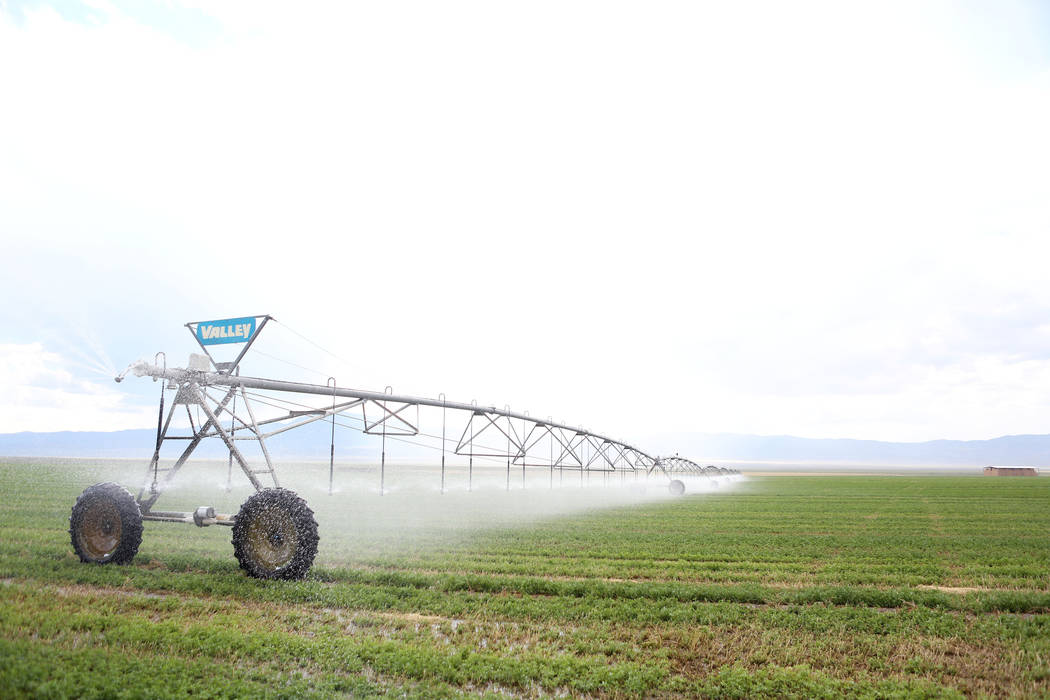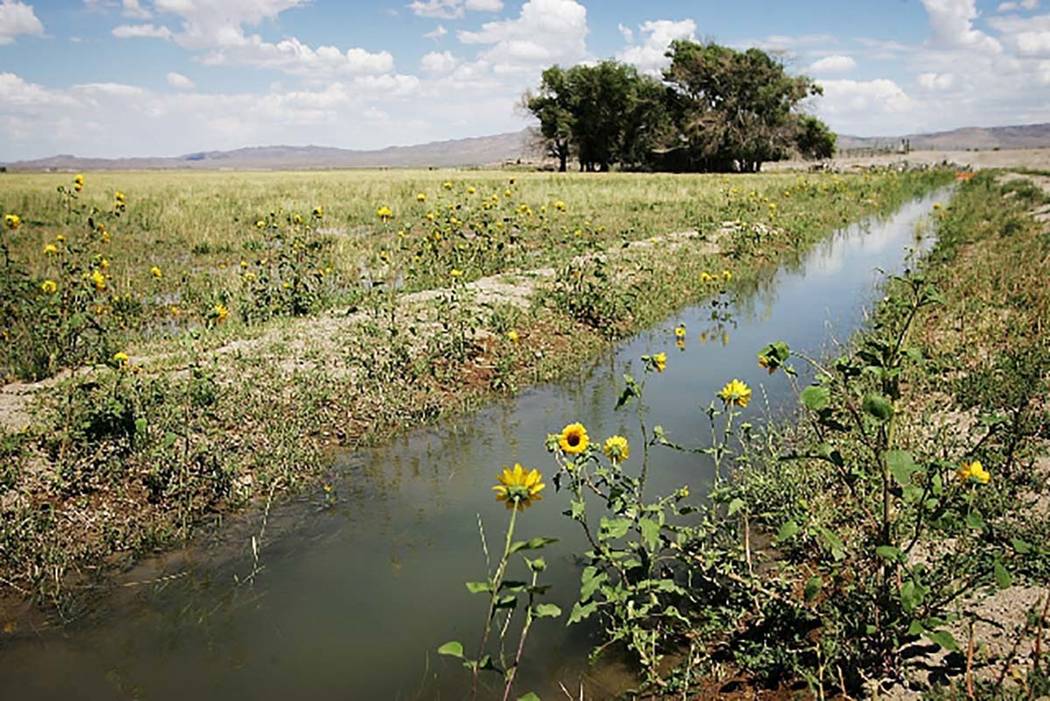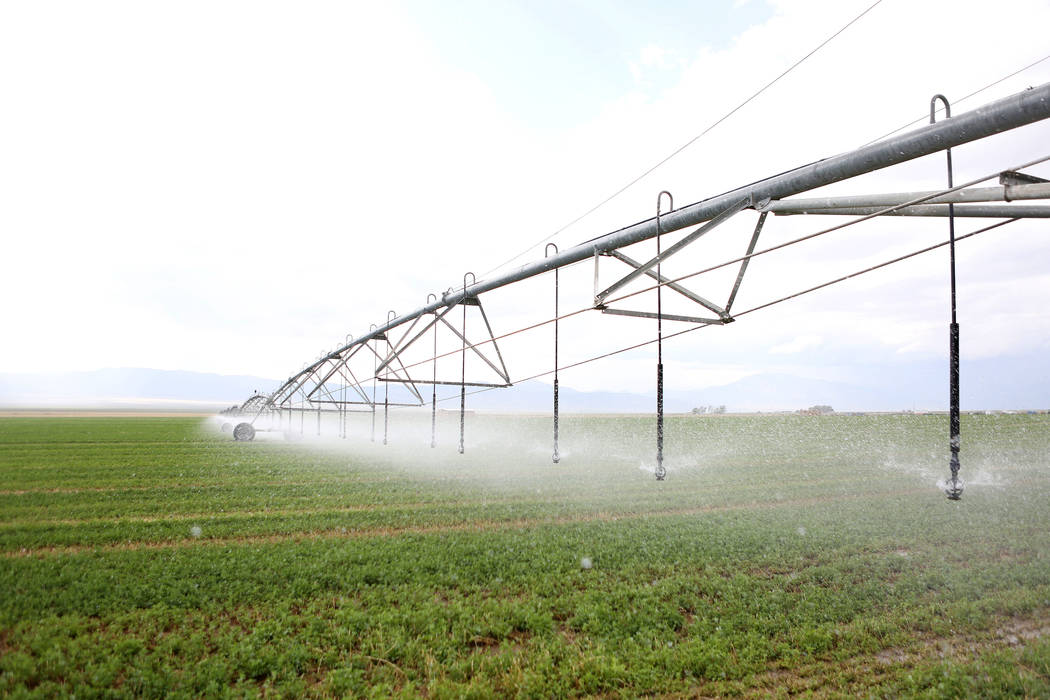How much water will agency be allowed to pump out of rural Nevada?
For the third time since 2008, Nevada’s top water regulator will convene a hearing in Carson City that could decide the fate of the Southern Nevada Water Authority’s plans to siphon groundwater from four rural valleys in eastern Nevada.
Starting at 8:30 a.m. Monday, State Engineer Jason King is slated to hear two weeks of testimony for and against the controversial, multibillion-dollar project.
The hearing on 25 groundwater applications could decide how much the authority would be allowed to pump from Cave, Dry Lake and Delamar valleys in Lincoln County and Spring Valley in White Pine County.
Water authority spokesman Bronson Mack called it “a significant stage in the permitting process.”
Simeon Herskovits, attorney for some opponents of the project, put it another way: “I guess you could say everything is at stake,” he said.
Just don’t expect a ruling anytime soon.
“It will be months,” said Susan Joseph-Taylor, deputy administrator for the Nevada Division of Water Resources. “These things take a while to put together. They’re complicated.”
Water not yet needed
Since 1989, Las Vegas water officials have been pushing plans to tap groundwater up to 300 miles away as a backup supply for a growing community that gets 90 percent of its drinking water from the overdrawn and drought-stricken Colorado River.

The idea has drawn fierce opposition in Nevada and Utah from rural residents, ranchers, American Indian tribes, conservationists, outdoor enthusiasts and even the Mormon Church, which operates a large cattle ranch in Spring Valley. Critics argue the project will drain a large swath of arid eastern Nevada, destroying the landscape and the livelihoods of those who depend on it — all while producing too little water to justify the project’s roughly $15 billion price tag.
The authority is counting on the network of wells and pipelines to supply enough water for at least 170,000 homes, though the agency does not expect to need the water for at least 15 to 20 years.
Almost three-quarters of the groundwater for the project is expected to come from Spring Valley.
Authority officials have spent tens of millions of dollars on permitting and prep work for the pipeline. At the moment, they have little to show for it.
In 2012, King granted the authority permission to pump up to 84,000 acre-feet a year from the four valleys, but a district court ruling in 2013 struck down that decision, effectively stripping the SNWA of the water it needs to fill its pipeline.
More fighting to come
It wasn’t the first time, either.
A decade ago, the authority won permission to pump almost 79,000 acre-feet a year from Cave, Dry Lake, Delamar and Spring valleys, only to see the state engineer’s ruling overturned by the Nevada Supreme Court in 2010.
One acre-foot of water is enough to supply two average Las Vegas Valley homes for just over a year.
Joseph-Taylor, who will serve as hearing officer for the proceeding, said the water authority will present its case during the first week, followed by the project’s opponents during the second week.
As important as it is, Herskovits does not expect the hearing to settle the fight over the pipeline project.
“I think that no matter what happens, we’ll end up in court,” he said.
Contact Henry Brean at hbrean@reviewjournal.com or 702-383-0350. Follow @RefriedBrean on Twitter.
READ MORE
Southern Nevada water agency's money-losing sideline — ranching, farming
How to watch, weigh in
All two weeks of the state hearing on the Southern Nevada Water Authority's groundwater project will be heard each weekday from 8:30 a.m. to 4:30 p.m. in Room 1214 of the Legislative Building in Carson City and broadcast live through the Nevada Legislature's website.
The video stream will be available starting at 8:30 a.m. Monday under the meeting calendar tab at www.leg.state.nv.us.
Friday afternoon has been set aside for public comment, though only from those who make the trip to Carson City.
During previous hearings on the water authority's groundwater applications in rural Eastern Nevada, the state set up video links to Las Vegas and some rural sites so people could comment. This time around, those who can't appear at the hearing in person are being asked to submit their input in writing before the 5 p.m. Oct. 20 deadline.
Written comments should be no more than five pages long and limited to the subjects covered in the hearing. They should be addressed to: Deputy Administrator Susan Joseph-Taylor at the Office of the State Engineer, 901 S. Stewart Street, Suite 2002, Carson City, NV 89701.


























